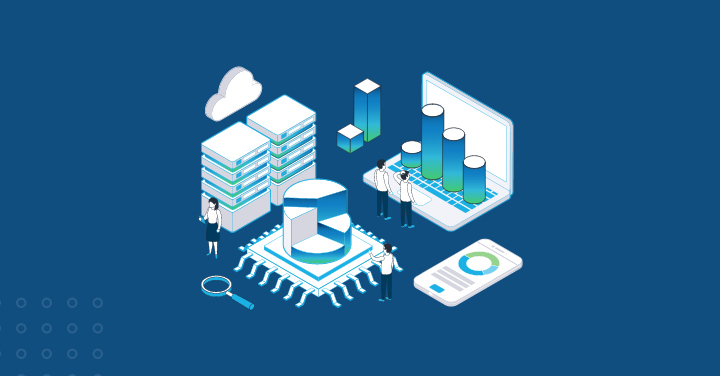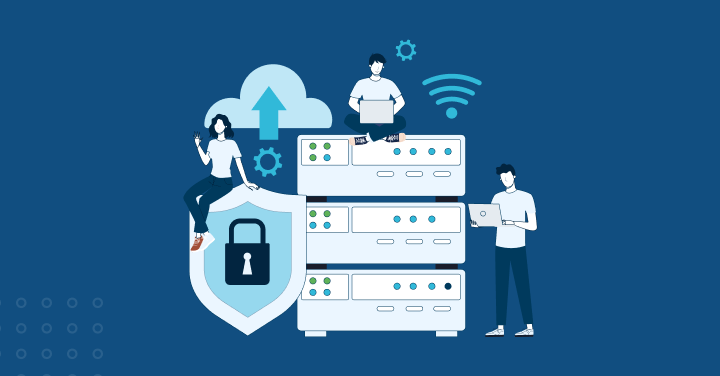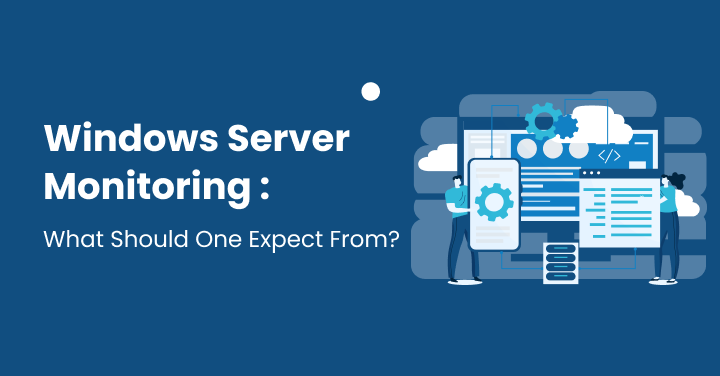Are you having trouble maintaining the smooth operation of your servers? A server monitoring control panel can help you track performance, identify problems and guarantee uptime. The operation of a server monitoring control panel will be discussed in this article.
What Are Server Monitoring Tools?
Applications known as server monitoring tools are made to track and evaluate the availability, health and performance of servers in real time.
For example they offer information on server usage metrics.
- CPU consumption.
- Memory consumption.
- Space on the disk.
- Networking activity.
These tools assist IT teams in tracking server performance, identifying problems before they become serious ones and improving system performance as a whole.
Teams can take quick action and prevent expensive disruptions by using effective monitoring to identify hardware failures, slow performance and server outages.
Additionally reports and logs are provided by server monitoring tools so that past data can be examined and future server requirements can be determined.
Why Server Monitoring Is Essential for Businesses
Prevent Downtime
A business can be destroyed by server outages. From cloud services going down to e-commerce platforms losing sales downtime has an impact on revenue, customer confidence and brand image. Businesses can proactively handle problems and stop outages before they happen by putting in place a server monitoring tool.
Enhance Performance.
Servers are important to data storage , websites and business apps. Server health metrics are measured by monitoring tools to ensure your servers are running as efficiently as possible. By identifying areas that need improvement like memory leaks or excessive CPU application these understanding help optimize the systems overall performance.
Increased Security.
Businesses in the digital age place a high priority on security. Any abnormal activity like malware or unauthorized access is instantly reported to administrators by server monitoring tools. In order to protect your servers and data this enables you to respond quickly and remove any possible threats.
For businesses handling sensitive data, combining server monitoring with KYC software ensures both compliance and strong identity verification, further strengthening overall security.
Effective Resource Management.
Server monitoring tools help you be the most efficient with your resources. You can prevent overloading your servers or encountering barriers by monitoring CPU memory and disk usage. This leads to better server performance and more economical resource assignment . performance.
Make the user experience better.
A server failure that results in slow response times or unavailable services could negatively affect the user experience. A reliable and smooth user experience will increase client retention and satisfaction when server performance is monitored.
Types of server monitoring
Each of the three primary categories of server monitoring is intended for a distinct infrastructure environment.
Dedicated Servers Monitoring
Monitoring of physical servers also known as dedicated servers keeps tabs on hardware characteristics like temperature power and memory problems. Monitoring virtual servers is more complicated.
VM Monitoring
Platforms such as VMware allow multiple virtual machines (VMs) to share physical hardware requiring both host system and VM monitoring.
Container monitoring:
Applications can now run in lightweight portable containers thanks to container technology which expands on the idea of virtualization.
Because container monitoring necessitates specialized tools that can track containers as they move between servers and scale automatically to meet demand it has become indispensable.
How to Choose the Right Server Monitoring Tool
To help you make the best decision for your company follow this easy process.
Evaluate your needs.
Determine your server configuration and necessary functionalities. Choose between more refined options like automation and server cluster support or basic monitoring.
Think about scalability.
Select an application that expands with your company. It shouldn’t lag when more servers or cloud expansion are added.
Assess Integrations.
For more efficient workflows confirm that the tool integrates with the systems you currently use such as incident management tracking or ticketing.
Verify the customization.
To meet your specific business needs, pick a tool that enables you to modify interference warnings and reports.
Take ROI and cost into account.
Consider more than just the price. Pay attention to how the tool provides long-term value by enhancing uptime performance and security.
Take a try.
Preceding to committing use free trials to evaluate features usability and performance.
The Benefits of Effective Server Monitoring: Enhancing Performance and Security
1. Information about Server Performance for Enhancement.
With the help of a server monitoring control panel you can maximize server performance with practical insights.
It provides.
- Data from the past to spot patterns and reoccurring problems. suggestions for reallocating resources or load balancing.
- Adjusting settings in response to performance data in real time.
- intelligent recommendations are provided by certain tools.
- They make recommendations on how to optimize server configurations according to workloads and usage trends.
2. Scalability for expanding infrastructure.
Your infrastructure will grow with your business. A solid server monitoring control panel scales with you by:. keeping performance tracking intact while supporting additional servers. keeping an eye on hybrid environments . Getting used to new technologies such as containerized apps.
3. Centralized control over several servers.
A quality server monitoring control panel should have the following centralized management features. It is possible to monitor all servers from a single dashboard without switching between devices or platforms.
To increase organization servers should be arranged according to their purposes. applying updates or modifications to multiple servers simultaneously. Manual interventions save time and reduce the chance of human error.
4. Monitoring of Security and Compliance.
In the financial or medical services industries compliance is essential. You can remain audit-ready by using a server monitoring control panel. keeping an eye on logs for security incidents such as configuration modifications or illegal gains.
making sure that regulations like PCI DSS HIPAA and GDPR are followed. preserving thorough logs of server operations. Some even come with vulnerability scanning. They assist you in locating vulnerabilities in your system before intruders do.
Conclusion
Smarter protection is necessary in hybrid environments in the current digital era. Server monitoring improves performance by optimizing resources and fortifies security by identifying threats early.
It guarantees uninterrupted operations dependability and uptime. To put it simply, spending money on monitoring ensures business continuity and continuously provides value to organizations and users.
FAQs
It minimizes downtime, maximizes resource utilization and identifies threats early.
Monitoring keeps businesses safe and effective because they use both local and cloud servers.
Yes by identifying anomalous activity and promptly notifying teams.
Indeed improved performance and uptime translate into more seamless user service.







